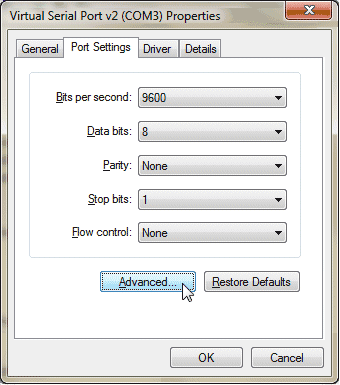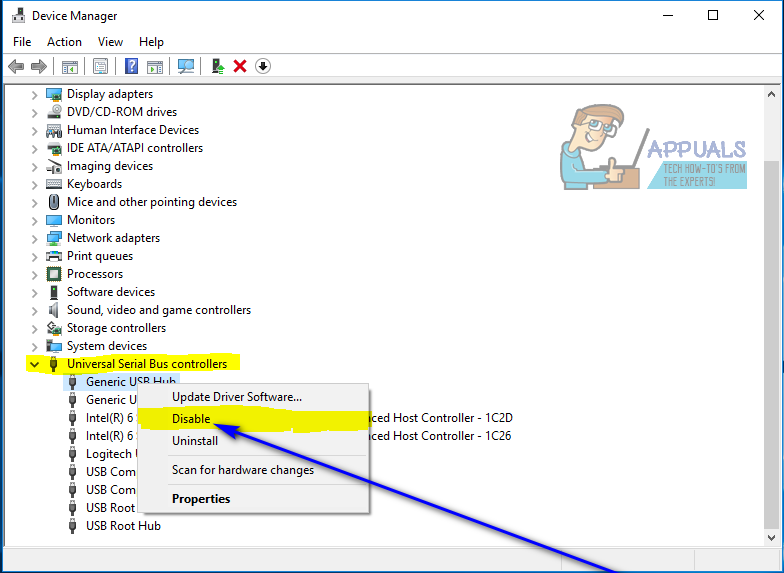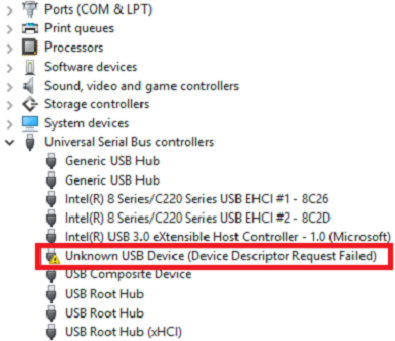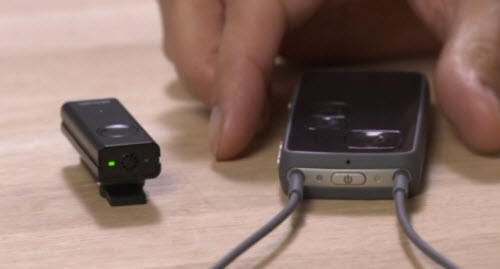Versions supported
USB COM Port Driver Software. Driver software for SEI-USB USB COM Port Driver Windows 10 This driver makes certain USB devices appear as a virtual COM port to the PC.
- This will launch the driver installation program. Follow the on-screen instructions to complete the install. Determining the USB COM Port Number: It is necessary to know which COM port the driver has assigned to the USB adapter in order for the legacy MasterTune and Datamaster products to communicate.
- The software driver is properly installed, but the USB-RS232 adaptor does not work as expected One of the common reasons that software may not work as expected with a USB-Serial adaptor when the devcie is properly installed, is many older programs (and even some new ones) only support a limited number of COM ports (e.g. Only COM1 - COM4).
- CipherLab Application Development software customizes our devices to workflows and allows fast deployment into web-based processes. Terminal Emulators enable immediate deployment into mainframe-based processes. Programming tools include.
- Windows 10
- Windows 8.1

Applies to
- Device manufacturers of CDC Control devices
Microsoft-provided in-box driver (Usbser.sys) for your Communications and CDC Control device.
In Windows 10, the driver has been rewritten by using the Kernel-Mode Driver Framework that improves the overall stability of the driver.
Usb Software Driver Free Download
- Improved PnP and power management by the driver (such as, handling surprise removal).
- Added power management features such as USB Selective Suspend.
In addition, UWP applications can now use the APIs provided by the new Windows.Devices.SerialCommunication namespace that allow apps to talk to these devices.

Usbser.sys installation
Load the Microsoft-provided in-box driver (Usbser.sys) for your Communications and CDC Control device.
Note
If you trying to install a USB device class driver included in Windows, you do not need to download the driver. They are installed automatically. If they are not installed automatically, contact the device manufacturer. For the list of USB device class driver included in Windows, see USB device class drivers included in Windows.
Windows 10
In Windows 10, a new INF, Usbser.inf, has been added to %Systemroot%Inf that loads Usbser.sys as the function device object (FDO) in the device stack. If your device belongs to the Communications and CDC Control device class, Usbser.sys is loaded automatically.You do not need to write your own INF to reference the driver. The driver is loaded based on a compatible ID match similar to other USB device class drivers included in Windows.

USBClass_02
USBClass_02&SubClass_02
- If you want to load Usbser.sys automatically, set the class code to 02 and subclass code to 02 in the Device Descriptor. For more information, see USB communications device class. With this approach, you are not required to distribute INF files for your device because the system uses Usbser.inf.
- If your device specifies class code 02 but a subclass code value other than 02, Usbser.sys does not load automatically. Pnp Manager tries to find a driver. If a suitable driver is not found, the device might not have a driver loaded. In this case, you might have to load your own driver or write an INF that references another in-box driver.
- If your device specifies class and subclass codes to 02, and you want to load another driver instead of Usbser.sys, you have to write an INF that specifies the hardware ID of the device and the driver to install. For examples, look through the INF files included with sample drivers and find devices similar to your device. For information about INF sections, see Overview of INF Files.
Note
Microsoft encourages you to use in-box drivers whenever possible. On mobile editions of Windows, such as Windows 10 Mobile, only drivers that are part of the operating system are loaded. Unlike desktop editions, it is not possible to load a driver through an external driver package. With the new in-box INF, Usbser.sys is automatically loaded if a USB-to-serial device is detected on the mobile device.

Windows 8.1 and earlier versions
Usb Drivers Software Version 2.3.1.2
In Windows 8.1 and earlier versions of the operating system, Usbser.sys is not automatically loaded when a USB-to-serial device is attached to a computer. To load the driver, you need to write an INF that references the modem INF (mdmcpq.inf) by using the Include directive. The directive is required for instantiating the service, copying inbox binaries, and registering a device interface GUID that applications require to find the device and talk to it. That INF specifies 'Usbser' as a lower filter driver in a device stack.
The INF also needs to specify the device setup class as Modem to use mdmcpq.inf. Under the [Version] section of the INF, specify the Modem and the device class GUID. for details, see System-Supplied Device Setup Classes.
For more information, see this KB article.
Configure selective suspend for Usbser.sys
Usb-com Software Driver
Starting in Windows 10, Usbser.sys supports USB Selective Suspend. It allows the attached USB-to-serial device to enter a low power state when not in use, while the system remains in the S0 state. When communication with the device resumes, the device can leave the Suspend state and resume Working state. The feature is disabled by default and can be enabled and configured by setting the IdleUsbSelectiveSuspendPolicy entry under this registry key:
To configure power management features of Usbser.sys, you can set IdleUsbSelectiveSuspendPolicy to:
'0x00000001': Enters selective suspend when idle, that is, when there are no active data transfers to or from the device.
'0x00000000': Enters selective suspend only when there are no open handles to the device.
That entry can be added in one of two ways:
Write an INF that references the install INF and add the registry entry in the HW.AddReg section.
Describe the registry entry in an extended properties OS feature descriptor. Add a custom property section that sets the bPropertyName field to a Unicode string, 'IdleUsbSelectiveSuspendPolicy' and wPropertyNameLength to 62 bytes. Set the bPropertyData field to '0x00000001' or '0x00000000'. The property values are stored as little-endian 32-bit integers.
For more information, see Microsoft OS Descriptors.
Develop Windows applications for a USB CDC device
If you install Usbser.sys for the USB CDC device, here are the application programming model options:
Starting in Windows 10, a Windows app can send requests to Usbser.sys by using the Windows.Devices.SerialCommunication namespace. It defines Windows Runtime classes that can use to communicate with a USB CDC device through a serial port or some abstraction of a serial port. The classes provide functionality to discover such serial device, read and write data, and control serial-specific properties for flow control, such as setting baud rate, signal states.
In Windows 8.1 and earlier versions, you can write a Windows desktop application that opens a virtual COM port and communicates with the device. Terratec network & wireless cards driver download for windows 10. For more information, see:
Win32 programming model:
.NET framework programming model:
Related topics

FT-991 ALL-BAND, MULTIMODE PORTABLE TRANSCIEVER
The FT-991 is the next generation in all mode, all band MF/HF/VHF/UHF transceiver with C4FM (System Fusion) Digital capability. The FT-991 includes multi-mode operation on CW, AM, FM, SSB, and Digital Modes (Packet, PSK31, RTTY and C4FM), with 100 Watts of HF/50mhz Capability (50 Watts VHF/UHF).
The New FT-991 now includes a high-resolution full color 3.5' TFT Touch panel for superior operability and visibility, incorporating a High Speed Spectrum scope with ASC (Automatic Spectrum-scope control) built right in.
The FT-991 is designed for the most competitive operating situations, with a suite of new features to enhance the experience. Whether you primarily operate at home, mobile or in the field, the FT-991 will provide outstanding fundamental performance plus give you easy access to the full range
of exciting modes available on the ham bands today.
State of the Art Digital Signal ProcessingRecognizing an all-important Golden Rule Amateur Radio - “You cannot work them if you cannot hear them”– the FT 991 features a rugged state-of-the-art highly balanced receiver circuit configuration. The high-speed floating point TMS320C6746 DSP chip (3000 MIPS / 2250 MFLOPS) from Texas Instruments used in the receiver design guarantees excellent interference rejection with actual signals under real-world conditions, not only on HF but also in the VHF and UHF bands.Selectable 3 and 15khz roofing filters The 1st IF frequency incorporates selectable robust 3 kHz and 15 kHz roofing filters that effectively attenuate interfering signals. The triple conversion circuit structure allows highly flexible gain distribution at each stage. This proven receiver design architecture enables elimination of unwanted signals through filters at each stage as well as optimized gain distribution.Automatic Spectrum-Scope (ASC) Advanced Spectrum Scope with ASC (Automatic Spectrum-Scope Control) located just below the LCD display gives the operator all the information for comfortable QSO on the DXing scene.3.5' Full Color TFT Display The FT-991 could not provide functions easier than at your fingertips with a 3.5' Full Color TFT Display for Superior Operability and Visibility.USB Capable The FT-991 can be connected to a computer using a USB cable for CAT control and firmware updates, or the use of an integrated SCU-17 Interface Unit to support USB Audio In/Out, TX Control (PTT, Key, Shift).100 Watts of Solid Performance The RF Amplifier in the FT-991 provides a clean and solid 100 Watts of Operating Power (50 Watts VHF/UHF) and is combined with a large heat-sink and forced air automatic cooling fan to increase operating time and prevent overheating.Compact, Lightweight & Portable The FT-991 Comes in a compact, lightweight package suitable for portable, mobile and base installations. Measuring 8.8'(W) x 3' (H) x 9.9' (L) at just 9.7 pounds this robust full featured mobile/portable radio is ready to go when and where you are!Internal Automatic Antenna Tuner Internal High Speed Automatic Antenna Tuner included in the package. The antenna tuner uses a LC switching network that has a large capacity 100 channel memory. The tuning data is automatically memorized to reduce tuning time when changing frequency.High Accuracy TCXO +/-0.5PPM High Resolution DDS/PLL local Oscillator included as part of the standard package.Specifications Frequency Ranges: RX 30 kHz - 56 MHz, 118 MHz - 164 MHz, 420 MHz - 470 MHz (specified performance, amateur bands only)Supplied Accessories Hand Microphone (MH-31A8J) |

